#lesbian Native American history
Text

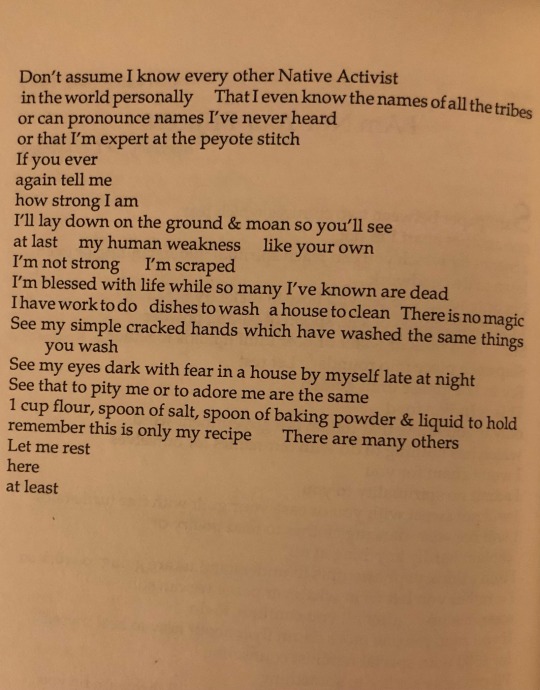
Source: Sinister Wisdom 43/44 ( The 15th Anniversary Retrospective)
#lesbian history#lesbian Native American history#lesbian poetry#Native American poetry#lgbt history#feminist history#lgbt#image#lesbian#photo#art#quote#poetry#personal
85 notes
·
View notes
Text

All hail Chin, the god of the Gays & Lesbians!
👨❤️👨🏳️🌈👩❤️👩
#history#chin#mayan#verapaz#indigineous people#mayan mythology#lgbtq#lgbtq history#pride#mesoamerican history#mayan culture#native american history#colonialization#gay#lesbian#bisexual#lgbtq positivity#pride month#new spain#colonization#mesoamerica#spanish colonial#gay history#mayan history#guatamala#same sex relationships#indigenous culture#nickys facts
14 notes
·
View notes
Note
hey, i find your posts about historical fiction pretty interesting, do you have any recs?
anon this is the most beautiful and validating ask i have ever received. absolutely of COURSE I have recs. not gonna be a lot of deep cuts on this list but i love all of these books and occasionally books do receive awards and acclaim because they are good. in no particular order:
the cromwell trilogy by hilary mantel. of course i gotta start with the og. it’s 40 million pages on the tudor court and the english reformation and it will fundamentally change you as a person and a reader
(sub rec: the giant, o’brien by hilary mantel. in many ways a much shorter thematic companion to the cromwell trilogy imo. about stories and death and embodiment and the historical record and 18th century ireland. if you loved the trilogy, read this to experience hils playing with her own theories about historical fiction. if you are intimidated by the trilogy, read this first to get a taste of her prose style and her approach to the genre. either way please read all four novels ok thanks)
lincoln in the bardo by george saunders. the book that got me back into historical fiction as an adult. american history as narrated by a bunch of weird ghosts and abraham lincoln. chaotic and lovely and morbid.
the everlasting by katy simpson smith. rome through the ages as seen by a medici princess, a gay death-obsessed monk, and an early christian martyr. really historically grounded writing about religion and power, and also narrated with interjections from god’s ex boyfriend satan. smith is a trained historian and her prose slaps
(sub rec: free men by katy simpson smith. only a sub rec bc i read it a long time ago and my memory of it is imperfect but i loved it in 2017ish. about three men in the woods in the post revolutionary american south and by virtue of being about masculinity is actually about women. smith did her phd in antebellum southern femininity and motherhood iirc so this book is LOCKED IN to those perspectives)
a mercy by toni morrison. explores the dissolution of a household in 17th century new york. very different place and time than a lot of morrison’s bigger novels but just as mean and beautiful
(sub rec: beloved by toni morrison. a sub rec bc im pretty sure everyone has already read beloved but perhaps consider reading it again? histfic ghost story abt how the past is always here and will never go away and loves you and hates you and is trying to kill you)
an artist of the floating world by kazuo ishiguro. my bestie sir kazuo likes to explore the past through characters who, for one reason or another (amnesia, dementia, being a little baby robot who was just born yesterday, etc), are unable to fully comprehend their surroundings. this one is about post-wwii japan as understood by an elderly supporter of the imperial regime
(sub rec: remains of the day by kazuo ishiguro. same conceit as above except this time the elderly collaborator is incapable of reckoning with the slow collapse of the system that sheltered him due to britishness.)
the pull of the stars by emma donoghue. donoghue is a strong researcher and all of her novels are super grounded in their place and time without getting so caught up in it they turn into textbooks. i picked this one bc it is a wwi lesbian love story about childbirth that made me cry so hard i almost threw up on a plane but i recommend all her histfic published after 2010. before that she was still finding her stride.
days without end by sebastian barry. this one is hard to read and to rec bc it is about the us army’s policy of genocide against native americans in the 19th century west as told by an irish cavalry soldier. it is grim and violent and miserable and also so beautiful it makes me cry about every three pages. first time i read it i was genuinely inconsolable for two days afterwards.
this post is long as hell so HONORABLE MENTIONS: the amazing adventures of kavalier & clay by michael chabon, the western wind by samantha harvey, golden hill by frances spufford, barkskins by annie proulx, postcards by annie proulx, most things annie proulx has written but i feel like i talk about her too much, the view from castle rock by alice munro, the name of the rose by umberto eco, tracks by louise erdrich
#honestly will probably be coming back with additions bc this is just based on whats currently on my bookshelf#made this post while staring at the copy of mirror & the light i keep on my desk as some kind of hilary mantalisman#send me your address so i can explain my passions etc etc#histfic
161 notes
·
View notes
Text

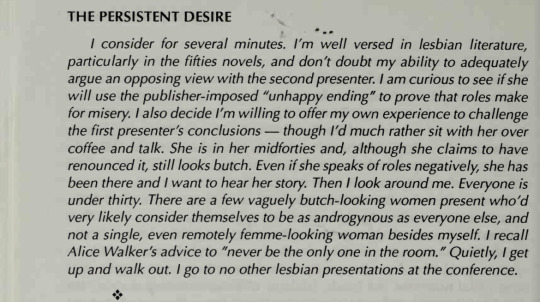
"The main justification for invalidating butch-femme is that its an imitation of heterosexual roles and, therefore, not a genuine lesbian model. One is tempted to react by saying "So what?" but the charge encompasses more than betrayal of an assumed fixed and "true" lesbian culture. Implicit in the accusation is the denial of cultural agency to lesbians, of the ability to shape and reshape symbols into new meanings of identification. Plagiarism, as the adage goes, is basic to all culture.
In the real of cultural identity, that some of the markers of a minority culture's boundaries originate in an oppressing culture is neither unusual nor particularly significant. For instance, in the United States certain kind of bead- and ribbon work are immediately recogniziable as specific to Native American cultures, wherein they serve artistic and ceremonial functions. Yet beads, trinkets, ribbons, and even certain "indian" blanket patterns were brought by Europeans, who traded them as cheap goods for land. No one argues that Indians out to give up beadwork or blanket weaving, thus ridding themselves of the oppressors symbols, because those things took on a radically different cultural meaning in the hands of Native Americans. Or consider Yiddish, one of the jewish languages. Although Yiddish is written in Hebrew characters and has its own idioms and nuances, its vocabulary is predominantly German. Those who speak German can understand Yiddish. Genocidal Germanic anti-Semitism dates back to at least the eleventh century. Yet East European Jews spoke "the oppressors language," developing in it a distinctive literary and theatrical tradition. Why is it so inconceivable that lesbians could take elements of heterosexual sex roles and remake them?
*
It is June 1987, and I am sitting in a workshop on "Lesbians and Gender Roles" at the annual National Women's Studies Conference. It is one of surprisingly few workshops on lesbian issues, particularly since, at a plenary session two mornings later, two thirds of the conference attendees will stand up as lesbians. Meanwhile, in this workshop the first speaker is spending half an hour on what she calls "Feminism 101," a description of heterosexual sex roles. Her point in doing this, she says, is to remind us of the origin of roles, "which are called butch and femme when lesbians engage in them." She tells us the purpose of her talk will be to prove, from her own experience, that "these roles are not fulfilling" for lesbians. She tells us that the second speaker will use lesbian novels from the 1950s to demonstrate the same thesis. And, indeed, the second speaker has a small stack of 1950s "pulp paperbacks" with her, many of them the titles that, when I discovered them in the mind-1970s, resonated for me in a way that the feminist books published by Daughters and Diana Press did not.
I consider for several minutes. I'm well versed in lesbian literature, particularly in the fifties novels, and don't doubt my ability to adequately argue an opposing view with the second presenter. I am curious to see if she will use the publisher-imposed "unhappy ending" to prove that roles make for misery. I also decide I'm willing to offer my own experience to challenge the first presenters conclusions- though I'd much rather sit with her over coffee and talk. She is in her midforties and, although she claims to have renounced it, still looks butch. Even if she speaks of roles negatively, she has been there and I want to hear her story. Then I look around me. Everyone is under thirty. There are a few vaguely butch-looking women present who'd very likely consider themselves to be as androgynous as everyone else, and not a single, even remotely femme-looking women besides myself. I recall Alice Walker's advice to "never be the only one in the room." Quietly, I get up and walk out. I go to no other lesbian presentations at the conference."
“Recollecting History, Renaming Lives: Femme Stigma and the feminist seventies and eighties" by Lyndall MacCowan, The Persistent Desire, (edited by Joan Nestle) (1992)
#the persistent desire#Lyndall MacCowan#Joan nestle#lesbian#lesbianism#butch and femme#butchfemme#butch and femme history#butch lesbian#femme lesbian#butch history#femme history#lesbian history#lesbian culture#lesbian feminism#lesbian feminist history#lgbt history#queer history
89 notes
·
View notes
Text
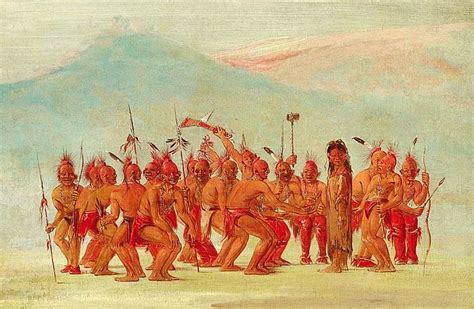
LGBTQ America: A Theme Study of Lesbian, Gay, Bisexual, Transgender and Queer History—chapter 09. Sexual and Gender Diversity in Native America and the Pacific Islands by Will Roscoe. part 2
Two Spirits in Native Tradition: Roles, Genders, Identities and Diversity cont.
In the twentieth century, ‘berdache’ “became the standard anthropological term for alternative gender roles among Native Americans. By the 1980’s, however, there was call for a change among scholars. In 1990, at a gathering of Native American and First Nations people, the term ‘two-spirit(ed)’ was coined. “Today, the term is used to refer to “both male-bodied and female-bodied native people who mix, cross, or combine the standard roles of men and women” (09-5).
The author acknowledges in a footnote that the term has its limitations (translation errors, and the fact that many tribes believe that all of us have the essence/spirit of male and female in us). But none of his reasons for these limitations match with my main critique both with the term two-spirit but mostly with the way it is often spoken of. Even within the acknowledgement of individuals who do not conform 100% to the Western concept of man or woman, the people are still fit into a binary. They are referred to as ‘male bodied’ and ‘female bodied’ two-spirited people.
To me, this often feels like an easy way for people to ‘short cut’ their understanding of native genders—as soon as they understand the way someone is sexed, they can still fit that person into a category, even if those categories are imperfect. Intersexuality is a ghost when topics of sex and gender arise. More and more, we understand that sex is not immutable, it is yet another social construction—the process of someone developing in utero and then continuing to grow and change in their lifetime is so complex that very often people do not fit neatly into either the distinct category of male or female.

(See the link below for a better image of this)
Whether that is their very chromosomes, hormones, secondary or primary sex characteristics—all these things and more combine to create a person. A person whose very sex is unique to them, as their gender is unique to them. Who knows the true reality of the two-spirit’s biological sex? No one—unless they are given extensive expensive testing that has only recently become available.
The truth is that intersexuality is natural and is common in humans, even in the Western world with its biopolitical control and its dualisms. The reason two-spirit people were and are held so special is because they do not fit neatly into these categories. To me it feels a kind of modern colonial erasure to try and sex the bodies of people who often very clearly and blatantly blurred all barriers. It feels as if it misses the entire point of the term two-spirit, as least as I understand it. But, I have not read much into what other two-spirits (especially elders) think about this concept.
“Two-spirit males have been documented in at least 155 tribes; in about a third of these a recognized status for females who adopted a masculine lifestyle existed as well”. (09-6) But as Roscue later adds, “absence of evidence cannot be taken as evidence of absence” (09-8).
In general, the lives of “native women have been overlooked […] and obscured by Euro-American sexual and racial stereotypes. Taking a broader view reveals that women throughout North American and the Pacific Islands often engaged in male pursuits, from hunting to warfare and tribal leadership, without necessarily acquiring a different gender identity” (09-8). Roscoe then offers some examples of Indigenous women being awesome.
The author then lists examples of traditional terms for two-spirited people across various tribes and explains that many of them cannot be literally translated into gender binary terms like ‘man-woman’. “These terms have lead anthropologists, historians, and archaeologists to describe two-spirit roles as alternative or multiple genders” (09-6). In fact, “many native societies are capable of accommodating three, four, and possibly more genders, or having a gender system characterized by fluidity, transformation, and individual variation” (09-7).
The author discusses how two-spirit children were identified often as youth by the certain type of activities they liked to participate in. Oftentimes ceremonies ‘marked’ people with two-spirit status. He then goes on to discuss the other ways two-spirits lived in society. “In many instances, male and female two spirits were medicine people, healers, shamans, and ceremonial leaders” (09-8). Certain ceremonial functions were specific to two-spirits and they were often seen to hold great power (09-8). “Because two-spirits occupied a distinct gender status, their relationships were not viewed as being same-sex” (09-9). !!!! This feels so important for some reason!!
Sexual and Gender Diversity in Native Hawai’i
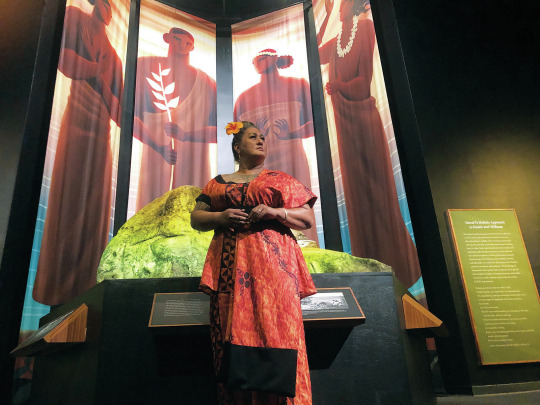
This section further emphases that indigenous peoples have had genders that go beyond male or female, man or woman and also that colonial violence is a tragedy. While I respect and love the people of Hawai’i and their struggles are so, so similar to Native Americans, I believe that the vast majority of Native Hawaiians do NOT consider themselves Native American (or American Indian or even just American) so my covering on this topic will be limited.
Roscoe speaks about the mahu stones that have extraordinarily sacred significance—these stones have a powerful history and connection to the mahu people (their gender diverse term). (This summary is literally so terrible and not at all a true representative of how important and beautiful this topic is, I apologize). Like the people, the stones faced colonization and were figuratively and then literally buried—“in the 1920s they were buried beneath a bowling alley” (09-15). They have since been reclaimed and are now being properly respected but, for the native peoples, “the Land inheres as sacred—beyond human perception and conception, beyond our capacities for belief and imagination—in and of itself” (09-15) and “If there were no humans on earth, they would still be sacred” (09-15). The stone’s spiritual power ‘has never been interrupted’ (09-15).
#queer theory#queer history#two spirit#two spirited#mahu#indigenous cultures#indigenous people#queer ecofeminism#queer politics#biology#intersex#queer ecology#ecofeminism#heteronormativity#colonialism#history#erotophobia#critical ecology#environmental politics#american history#indigenous history#human history
26 notes
·
View notes
Note
do you have any book recommendations? anything like the locked tomb or just fantasy/science fiction in general? :)
Hi anon I LOVE GIVING BOOK RECS!
Unfortunately I haven’t found anything quite like TLT, but when you break it into main themes some other series come close. So, if you liked The Locked Tomb for…
Morally ambiguous lesbians and oppressive empires? Try The Traitor Baru Cormorant by Seth Dickinson. I love Baru as a character and I love and what the book does with themes of cultural assimilation and how the road to a righteous goal is paved with moral compromises until you’re not sure you’re still on the right path. Content warning for institutional homophobia, which affects the plot and the main character. It’s never gratuitous, but it’s pretty much the opposite of TLT under that point of view so heads up.
Unique worldbuilding, queer characters, distinctive sense of place in a land that was once Earth? Try The Fifth Season by NK Jemisin. This isn’t to everybody’s tastes (usually people love it or hate it) but it does some VERY cool things with scifi and deservedly won a Hugo.
Intricate worldbuilding, necromancy, gothic vibes? Try The Bone Orchard by Sara Mueller. This definitely hits the same “confused and confusing female main character who doesn’t know her own mind” vibes as HtN, which can be good or bad depending on your tastes, but the necromancy bits are fantastic.
Oppressive planetary empires and queer characters? Try A Memory Called Empire by Arkady Martine. This too is about cultural assimilation and has a main murder mystery plot. Space opera about a young diplomat in a precarious position who is sort of sharing her mind space with someone else. Bonus: fun scifi worldbuilding based on some lesser-known historical empires.
Other SFF I read or reread in 2022
City of Stairs by Robert Jackson Bennett for worldbuilding, shady empires, female MC, urban fantasy vibes with a strong sense of place and a murder mystery thrown in for flavour.
Deeplight by Frances Hardinge. YA fantasy with horror vibes that I very much enjoyed as an adult not usually keen on YA. There are scary eldritch gods, toxic relationships with a hopeful ending, excellent fantasy worldbuilding, a really solid sense of civilization (especially the Deaf culture of the divers that is really interwoven in the setting). Sea monsters! Secrets! Street urchins! This is one of my all-time favourites.
The Scholomance series by Naomi Novik, starting with A Deadly Education; the third book came out two weeks after Nona and it gave me emotional whiplash, because (spoiler!) the angry goth girl gets to be happy in this one! YA, very vivid very fun worldbuilding, spunky teenage heroine with a cynical disposition and death powers.
Obligatory rec for Jonathan Strange & Mr Norrell just because it’s one of those books that make me feel like I’m a richer person for having read them. It’s an impressive alternate history fantasy, the writing is masterful, the fae villain is unsettling and inhumanly evil, the mundane villains (pettiness, spite, centuries-old institutions) provide excellent dramatic irony. Everyone is insufferable in a petty way that’s also endlessly entertaining, and the two titular characters are absolutely obsessed with each other. The prose is a pastiche and tremendously well written. My only nitpick is that there are way too many men. I get why, given the setting the premise and the characters, and I loved the book, but since this rec originated with an ask about TLT I feel like I have to clarify that the gender ratio is pretty much the polar opposite.
My Heart Is a Chainsaw by Stephen Graham Jones if you like spunky teenage girl protagonists, poetically described gore, critique of colonialism and indigenous displacement. This is a horror thriller not a sff, sent in the contemporary US, and it’s basically a love letter to the horror movie genre + Native American folk legends. Reccing it anyway because YMMV but to to me it really hit some of the spots that HtN does. (Content warning for off-screen CSA)
The Gone World by Tom Sweterlitsch. Speculative fiction thriller, lots of jumping between alternate timelines and wondering what exactly is going on. It’s not flawless but it’s unabashedly weird in a very fun, very unique way that I really appreciated.
Under the Pendulum Sun by Jeannette Ng. Unique worldbuilding, distinct narrative voices, gothic vibes, weird religious imagery. Fantasy historical fiction about cruel inhuman fae, the worldbuilding is brilliant and very vivid (and what an aesthetic it is!), the story is fucked up in a delicious way, and the prose is a delightful Brontë pastiche. Content warnings for consensual sibling incest and Christian missionaries on a mission of “civilization” through faith (it’s not portrayed in a positive way but the colonialism is definitely there).
[I only flagged content warnings that aren't canon-typical for TLT, but definitely more apply. If you need clarification on a specific book HMU]
#reading recs#reading list#the traitor baru cormorant#teixcalaan#the broken earth#the scholomance#ask#anonymous#@anon if you've read any of these and have Opinions whether good or bad lmk#so i can narrow it down to tailor made recs AND have an excuse to do more BookTalk#baru cormorant
290 notes
·
View notes
Text

“Le Moyne confessed that he didn’t know the spiritual significance of the work being performed by the Timucuan hermaphrodites…Administering to the needs of the dead, bringing the transition between the living and the afterlife, was a spiritually significant task that was vital to maintaining balance and harmony in Indigenous societies.
It was European chauvinism, Christianity, and the superficiality of Laudonnière and Le Mount’s observations that imposed a marginalized status on the Timicuan hermaphrodites. That the people Laudonnière and Le Moyne described possessed physical strength, performed labor associated with women, and took on ceremonial roles similar to priests suggests that hermaphrodites occupied an important position in the Timucuan kinship system. As people who internally and externally embodied the qualities of both men and women, the people Laudonnière and Le Moyne labeled hermaphrodites were likely viewed by their peers as possessing spiritual knowledge of immense power.
…
European sources close off possibilities for gender roles and identities that transcended the male-female binary which was solidifying in European culture. Across a range of literary genres, European writers conflated hermaphrodites, sodomites, eunuchs, and cross-dressers. They did this to highlight what they saw as abnormalities in Native American societies. Two other labels that received increasing use during the late sixteenth century were “catamite” and “berdache.” These terms have a long history dating back to the ancient world. In Ancient Greek and Roman society, a catamite was a “kept boy,” the intimate companion of an adult male in a pederastic relationship. By the late sixteenth century, Europeans used this term as a slur. Similarly, the ancient Arabic bardaj or barah evolved into the Spanish terms bardaxa and bardaje, and the French berdache. Collectively these words referred to a “kept boy,” slave, or sodomite. Whether uttered by civil or church authorities, all of these terms carried negative connotations in European cultures.
The Latina Pueblo poet and activist Paula Gunn Allen lamented the use of these labels and their imposition onto Native American cultures. Looking back over the history of European colonialism in North America, Allen identified European notions of patriarchy and Christianity as the root cause of these developments. Europeans combined gender, sexual, and racial ideologies to justify invasion, the territorial dispossession of indigenous communities, and genocide. For Allen, feminist approaches to Native history and culture offered a path to “ameliorating the effects of patriarchal colonialism, enabling many of the tribes to reclaim their ancient gynarchical, egalitarian, and sacred traditions.”
Allen, who identified as a lesbian and lamented the “devaluation of lesbian and gay tribal members as leaders, shamans, healers, or ritual participants,” advanced an unapologetically Indigenous perspective on North American history. It’s a historical consciousness that helps us appreciate the enduring impact that labels like “hermaphrodite” had (and have) on the collective psyche of Native American communities”
— Gregory D. Smithers, Reclaiming Two-Spirits: Sexuality, Spiritual Renewal, & Sovereignty in Native America
80 notes
·
View notes
Text
For black history month, I’d like to shed some light on some of my favorite queer people of color. 🏳️⚧️🏳️🌈💗
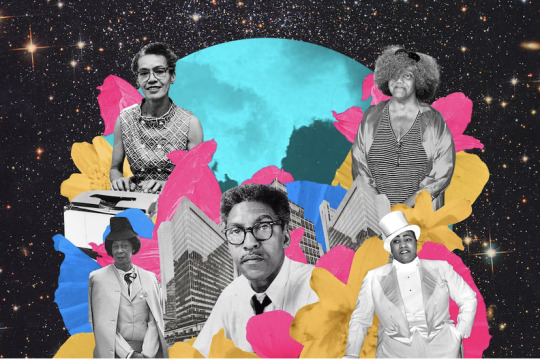
1). MARSHA. P JOHNSON ✨
Marsha. P Johnson was an American drag queen born August 24th 1945. Johnson was known for being a prolific queer and trans right advocate. She was also apart of the stone wall riots which sent of a wave of LGBTQ rights and protests. A quote by her:
“Darling, I want my gay rights now. I think it’s about time the gay brothers and sisters got their rights… especially the women.”

2). LUCY HICKS ANDERSON.
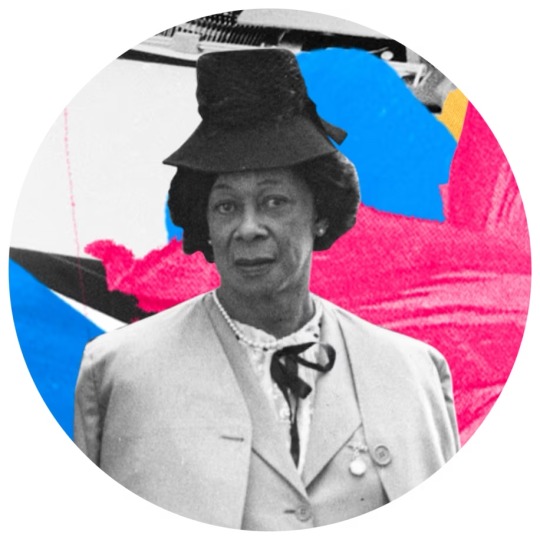
Lucy Hicks Anderson was a transgender pioneer for marriage equality. She was known as Americas first ever prominent trans women. Lucy was married to her husband, and paved the way for marriage equality. A quote by her:
“I defy any doctor in the world to prove that I am a woman.”
3). BAYARD RUSTIN.
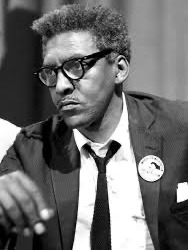
Bayard Rustin was a gay civil rights activist. He is heavily recognized as being a key part in the civil rights movement. He was a prominent gay man during the civil rights movement when there was no space to talk about lesbian and gay issues. A quote by him:
“If we desire a society of peace, then we cannot achieve such a society through violence. If we desire a society without discrimination, then we must not discriminate against anyone in the process of building this society. If we desire a society that is democratic, then democracy must become a means as well as an end.”
4). AUDRE LORDE
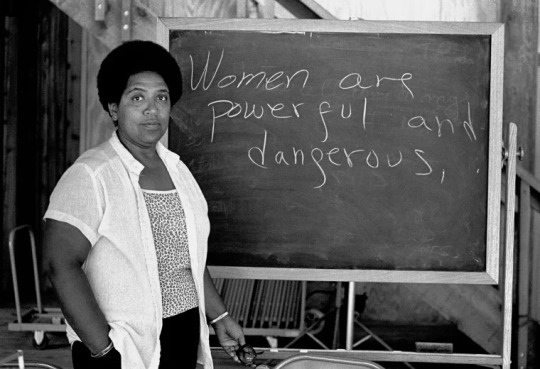
Audre Lorde was a lesbian poet. Who made lasting contributions to feminist activism and history. Being known as a fierce advocate for queer, black, and women’s rights. Among her most notable works are “Coal” (1976), “The Black Unicorn” (1978), “The Cancer Journals” (1980) and “Zami: A New Spelling of My Name” (1982). A quote from her:
“I write for those women who do not speak, for those who do not have a voice because they were so terrified, because we are taught to respect fear more than ourselves.”
5). JAMES BALDWIN

James Baldwin was a American writer and social critic. He is perhaps best known for his 1955 collection of essays, "Notes of a Native Son," and his groundbreaking 1956 novel, "Giovanni's Room," which depicts themes of homosexuality and bisexuality. Which broke social norms and showed that queer people had a place in the books they read. James spent most of his career educating people on black culture and history. And taught more people about homosexuality in a good light. A quote by him:
“Everybody’s journey is individual. If you fall in love with a boy, you fall in love with a boy. The fact that many Americans consider it a disease says more about them than it does about homosexuality.”
————————
Thank you to everyone who read this all the way through! I can’t donate money to organizations but try to do the best I can. We need to start recognizing the wonderful things that have come from the black queer community. 🏳️⚧️🏳️🌈💗I hope I can do a little bit to positively help.
#queer#lgbtq community#lgbtq#educate yourself#activism#bisexual#black culture#queer poc#black history month
13 notes
·
View notes
Text

African American LGBTQ Trailblazers Who Made History
From 1960s civil rights activist Bayard Rustin (featured in the photo) to Chicago's first lesbian mayor, Lori Lightfoot, Black LGBTQ Americans have long made history with innumerable contributions to politics, art, medicine and a host of other fields.
“As long as there have been Black people, there have been Black LGBTQ and same-gender-loving people,” David J. Johns, executive director of the National Black Justice Coalition, told NBC News. “Racism combined with the forces of stigma, phobia, discrimination and bias associated with gender and sexuality have too often erased the contributions of members of our community."
Stormé DeLarverie was called the "guardian of lesbians in the Village." Beyond her LGBTQ activism, DeLarverie also organized and performed at fundraisers for women who suffered from domestic violence and their children.
James Baldwin is perhaps best known for his 1955 collection of essays, "Notes of a Native Son," and his groundbreaking 1956 novel, "Giovanni's Room," which depicts themes of homosexuality and bisexuality. Baldwin spent a majority of his literary and activist career educating others about Black and queer identity, as he did during his famous lecture titled “Race, Racism, and the Gay Community” at a meeting of the New York chapter of Black and White Men Together (now known as Men of All Colors Together) in 1982.
Audre Lorde, a self-described “Black, lesbian, feminist, mother, poet, warrior," made lasting contributions in the fields of feminist theory, critical race studies and queer theory through her pedagogy and writing. Among her most notable works are “Coal” (1976), “The Black Unicorn” (1978), “The Cancer Journals” (1980) and “Zami: A New Spelling of My Name” (1982).
Ernestine Eckstein was a leader in the New York chapter of Daughters of Bilitis, the first lesbian civil and political rights organization in the United States. She attended "Annual Reminder" picket protests and was frequently one of the only women — and the only Black woman — present at early LGBTQ rights protests.
There are plenty more.
DNA America
“It’s what we know, not what you want us to believe.”
65 notes
·
View notes
Text
Putting this here to not derail the other post, but that post about queer goyim using Jewish activism and teachings but not caring about Jewish people reminds me how I feel about some of the people who use 2Spirit without understanding what it means.
I see a lot of non-indigenous people use 2S in arguments about trans history, which is cool to me! I love having Indigenous history and culture recognized, especially pre-contact traditions and knowledge that highlights how different Indigenous is from Euro culture (atleast back then). But it leaves such a bad taste in my mouth when non-Indigenous people use it then don’t care and don’t listen to Indigenous people. This isn’t saying don’t use it in those arguments, I use it myself, but if you don’t care about Indigenous people and culture and don’t want to listen to us about it, don’t cherry pick it and misrepresent us and the term itself.
A misconception I see about 2 Spirit people is 1) applying it to all tribes. We are not a monolith, many tribes historically didn’t have 2 Spirit people, and there is a lot of diversity of the 2 Spirit people who did and do exist. The way each tribe views and interacts with gender is unique and deserves to exist on its own. The diversity of language families alone makes it impossible for the same words and meanings to be shared across all Indigenous people.
2) 2 Spirit is an umbrella term and doesn’t exclusively mean third gender/ multi-gender/ transgender. Those people are absolutely part of 2 Spirit, but 2 Spirit is an umbrella term, and a relatively new one at that (not a new concept however). 2 Spirit, simply put, means any pan-Indigenous identity that did not fit into the colonizers world and was tried to be erased through assimilation. This includes cis gay people. It was coined in the 1990 by the Inter-Tribal Native American Lesbian and Gay Conference to be a very broad, pan-Indigenous term that connects many First Nation people in a cultural way, sometimes even needing protection from other Indigenous people. A huge part of it has always been rejecting the Western binary of two genders, but spirituality and sexuality are an incredibly important part of it too.
#native#native american#indigenous#first nation#lgbtq+#indigenous history#indigenous culture#2s#2 spirit#trans#mine
56 notes
·
View notes
Text
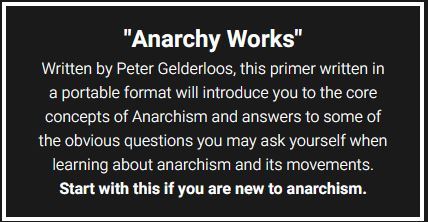
Chapter 1. Human Nature
Haven’t humans always been patriarchal?
One of the most ancient forms of oppression and hierarchy is patriarchy: the division of humans into two rigid gender roles and the domination of men over women. But patriarchy is not natural or universal. Many societies have had more than two gender categories, and have allowed their members to change gender. Some even created respected spiritual roles for those who did not fit into either of the primary genders. The majority of prehistoric art depicts people who are either of no determinate gender or people with ambiguous, exaggerated combinations of masculine and feminine traits. In such societies, gender was fluid. It was something of a historic coup to enforce the notion of two fixed, idealized genders that we now consider natural. Speaking in strictly physical terms, many perfectly healthy people are born intersexed, with male and female physiological characteristics, showing that these categories exist on a fluid continuum. It makes no sense to make people who do not fit easily into one category feel as though they are unnatural.
Even in our patriarchal society, in which everyone is conditioned to believe that patriarchy is natural, there has always been resistance. Much current resistance by queer people and transgender people takes a horizontal form. One organization in New York City, called FIERCE!, includes a wide spectrum of people excluded and oppressed by patriarchy: transgender, lesbian, gay, bisexual, two-spirit (an honored category in many Native American societies for people who are not identified as strictly men or women), queer, and questioning (people who have not made up their minds about their sexuality or gender identity, or who do not feel comfortable in any category). FIERCE! was founded in 2000, mostly by youth of color, and with anarchist participation. They uphold a horizontal ethic of “organizing by us, for us,” and they actively link resistance to patriarchy, transphobia, and homophobia with resistance to capitalism and racism. Their actions have included protesting police brutality against transgender and queer youth; education through documentary films, zines, and the internet; and organizing for fair healthcare and against gentrification, particularly where the latter threatens to destroy important cultural and social spaces for queer youth.
At the time of this writing they are particularly active in a campaign to stop the gentrification of the Christopher Street Pier, which has been one of the only safe public spaces for homeless and low-income queer youth of color to meet and build community. Since 2001, the city has been trying to develop the Pier, and police harassment and arrests have multiplied. The FIERCE! campaign has helped provide a rallying point for those who want to save the space, and changed the public debate so that other voices are heard besides those of the government and business owners. Our society’s attitudes about gender and sexuality have changed radically in the past centuries, largely because of groups like this taking direct action to create what is said to be impossible.
Resistance to patriarchy goes back as far as we care to look. In the “good old days” when these gender roles were supposedly unchallenged and accepted as natural, we can find stories of utopia, that upset the assumption that patriarchy is natural, and the notion that civilized progress is bringing us steadily from our brutal origins towards more enlightened sensibilities. In fact the idea of total freedom has always played a role in human history.
In the 1600s, Europeans were streaming to North America for a variety of reasons, building new colonies that exhibited a wide range of characteristics. They included plantation economies based on slave labor, penal colonies, trading networks that sought to compel the indigenous inhabitants to produce large quantities of animal skins, and fundamentalist religious utopias based on the total genocide of the native population. But just as the plantation colonies had their slave rebellions, the religious colonies had their heretics. One noteworthy heretic was Anne Hutchinson. An anabaptist who came to New England to escape religious persecution in the old world, she began to hold women’s meetings in her house, discussion groups based on free interpretation of the Bible. As the popularity of these meetings spread, men began to participate as well. Anne won popular support for her well argued ideas, which opposed the slavery of Africans and Native Americans, criticized the church, and insisted that being born a woman was a blessing and not a curse.
The religious leaders of the Massachusetts Bay Colony put her on trial for blasphemy, but at trial she stood by her ideas. She was heckled and called an instrument of the devil, and one minister said, “You have stepped out of your place, you have rather been a husband than a wife, a preacher than a hearer, and a magistrate than a subject.” Upon her expulsion Anne Hutchinson organized a group, in 1637, to form a settlement named Pocasset. They intentionally settled near to where Roger Williams, a progressive theologian, had founded Providence Plantations, a settlement based on the idea of total equality and freedom of conscience for all inhabitants, and friendly relations with the indigenous neighbors. These settlements were to become, respectively, Portsmouth and Providence, Rhode Island. Early on they joined to form the Rhode Island Colony. Both settlements allegedly maintained friendly relations with the neighboring indigenous nation, the Narragansett; Roger Williams’ settlement was gifted the land they built on, whereas Hutchinson’s group negotiated an exchange to buy land.
Initially, Pocasset was organized through elected councils and the people refused to have a governor. The settlement recognized equality between the sexes and trial by jury; abolished capital punishment, witchtrials, imprisonment for debt, and slavery; and granted total religious freedom. The second synagogue in North America was built in the Rhode Island colony. In 1651 one member of Hutchinson’s group seized power and got the government of England to bestow him governorship over the colony, but after two years the other people in the settlement kicked him out in a mini-revolution. After this incident, Anne Hutchinson realized that her religious beliefs opposed “magistracy,” or governmental authority, and in her later years she was said to have developed a political-religious philosophy very similar to individualist anarchism. One might say that Hutchinson and her colleagues were ahead of their times, but in every period of history there have been stories of people creating utopias, women asserting their equality, laypeople negating the religious leaders’ monopoly on truth.
Outside of Western civilization we can find many examples of non-patriarchal societies. Some stateless societies intentionally preserve gender fluidity, like the Mbuti described previously. Many societies accept fixed genders and division of roles between men and women, but seek to preserve equality between these roles. Several of these societies allow transgender expressions — individuals changing their gender or adopting a unique gender identity. In hunter-gatherer societies “a sharp and hard division of labor between the sexes is not universal... [and in the case of one particular society] virtually every subsistence activity can be, and often is, performed by either men or women”.[7]
The Igbo of western Africa had separate spheres of activity for men and women. Women were responsible for certain economic tasks and men for others, and each group held power autonomously over their sphere. These spheres designated who produced which goods, domesticated which animals, and took which responsibilities in the garden and market. If a man interfered in the women’s sphere of activity or abused his wife, the women had a ritual of collective solidarity that preserved the balance and punished the offender, called “sitting on a man.” All the women would assemble outside the man’s house, yelling at him and insulting him in order to cause him shame. If he did not come out to apologize the mob of women might destroy the fence around his house and his outlying storage buildings. If his offense were grievous enough, the women might even storm into his house, drag him out, and beat him up. When the British colonized the Igbo, they recognized men’s institutions and economic roles, but ignored or were blind to the corresponding women’s sphere of social life. When Igbo women responded to British indecency with the traditional practice of “sitting on a man,” the British, possibly mistaking it for a women’s insurrection, opened fire, putting an end to the gender-balancing ritual and cementing the institution of patriarchy in the society they had colonized.[8]
The Haudennosaunne, called the Iroquois by Europeans, are a matrilineal egalitarian society of eastern North America. They traditionally use several means to balance gender relations. Whereas European civilization utilizes gender division to socialize people into rigid roles and to oppress women, queer, and transgendered people, the gendered division of labor and social roles among the Haudennosaunne functions to preserve a balance, assigning each group autonomous niches and powers, and allowing a greater degree of movement between genders than is considered possible in Western society. For hundreds of years the Haudennosaunne have coordinated between multiple nations using a federative structure, and at each level of organization there were women’s councils and men’s councils. At what might be called the national level, which concerned itself with matters of war and peace, the men’s council made the decisions, though the women held a veto power. At the local level, women held more influence. The basic socio-economic unit, the longhouse, was considered to belong to the women, and men had no council at this level. When a man married a woman, he moved into her house. Any man who did not behave could ultimately be kicked out of the longhouse by the women.
Western society typically sees the “higher” levels of organization as being more important and powerful — even the language we use reflects this; but because the Haudennosaunne were egalitarian and decentralized, the lower or local levels of organization where the women had more influence were more important to daily life. In fact when there was no feud between the different nations the highest council might go a long time without meeting at all. However, their’s was not a “matriarchal” society: men were not exploited or devalued the way women are in patriarchal societies. Rather, each group had a measure of autonomy and means for preserving a balance. Despite centuries of colonization by a patriarchal culture, many groups of Haudennosaunne retain their traditional gender relations and still stand out in sharp contrast to the gender-oppressive culture of Canada and the United States.
#anarchism#daily posts#communism#anti capitalist#anti capitalism#late stage capitalism#anarchy#anarchists#libraries#leftism#anarchy works#the patriarchy#feminism#sexism
4 notes
·
View notes
Text
Hi, my name is Val 💕
• 22 y.o. (minors dni)
• somehow a writer, currently working on a book about dark academia victorian midwifes-necromancers (all of them are lesbians ofc)
• I have some kind of undiagnosed neurodivergent stuff happening in my brain, red hair and anxiety!
• gamer (my current obsession is Baldurs Gate 3, but also I like Fallout, Resident Evil, The Witcher and Borderlands!).
• I spent my whole childhood in Homestuck, Creepypasta and MLP fandoms….
• I play D&D, VtM (chronic Ventrue) and always end up with the weakest character possible but also containing all brain cells of the party.
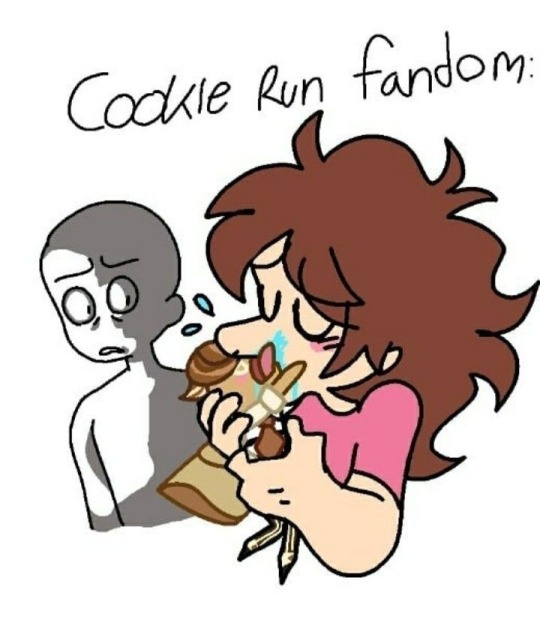
• my favorite shows are Game of Thrones, YELLOWJACKETS (sorry I’m going feral), A league of their own (and every other canceled sapphic show out there)? American Horror Story, live action One Piece, Wednesday (lets go lesbians), Arcane (LETS GO LESBIANS) and the Bridgerton!

• I’m LESBIAN GAY HOMOSEXUAL and a buff masculine women enjoyer (I like my women submissive in a way the scary guardian dog is submissive)
• reader (IM PERFECTLY NORMAL ABOUT THE LOCKED TOMB BOOKS and Baru Cormorant books)
• obsessed with space, sci-fi, true-crime, learning philosophy, Deutsch language, MUSICALS, historical fashion (also 17th, 18th, 19th century history in general), body horror, pomegranates as a metaphor for all-consuming lesbian love, vampires, clowns and monsters!
• I work as an accountant, but can also do nails!
• English isn’t my native language and I’m new to tumblr so please be kind about my mistakes..
• my favorite colors are pink and red 💕❤️
• I have really bad chronic pain and that’s one of the most used themes in my writing.

#pinned post#mutuals#yellowjackets#opla#baru cormorant#tlt#the locked tomb#bg3#vtm#vampire the masquerade#borderlands#fallout
7 notes
·
View notes
Text
The Proud Family: Louder and Prouder Season 2 Review

The Proud Family: Louder and Prouder is a coming-of-age animated sitcom and adventure by Bruce W. Smith and Ralph Farquhar, two well-known producers. It is a revival and soft reboot of The Proud Family, a classic Disney series by Smith which aired in the early 2000s. This review will have spoilers.
Reprinted from Pop Culture Maniacs and Wayback Machine. This was the twenty-third article I wrote for Pop Culture Maniacs. This post was originally published on February 13, 2023.
This animated series centers on Penny Proud (voiced by Kyla Pratt), a 16-year-old Black girl in the town of Smithville. She attempts to navigates her home life, filled the antics off her father, Oscar (voiced by Tommy Davidson), who owns a failing snack business, her mother, Trudy (voiced by Paula Jai Parker), a well-off veterinarian, her grandmother, Suga Mama (voiced by Jo Marie Payton), and her two siblings, Bebe and Cece. At high school, she has four friends-of-sorts: Michael Collins, Dijonay Jones, Zoey Howser, and LaCienega Boulevardez. They are voiced by EJ Johnson, Karen Malina White, Soleil Moon Frye, and Alisa Reyes respectfully. All the while, two new kids, Maya and KG, raised by two dads (Barry and Randall), try to adapt to their new life in Smithville.
The show's first season broke ground for featuring openly gay characters, unlike in the original series, such as Michael, who is also gender non-conforming. His voice actor even considered gender transition. This character is joined by an interracial couple: Barry and Randall Leibowitz-Jenkins, who voiced by two gay actors (Zachary Quinto and Billy Porter). They are the adopted fathers of Maya and Francis "KG", voiced by Keke Palmer and "A Boogie" Dubose. Palmer previously voiced Izzy Hawthorne in Lightyear, a lesbian character who has a wife named Alisha. She has also stated that she does not want her sexuality to be defined by labels and that people should be fluid when giving themselves labels.
The series has been swept in the culture wars, with claims it is promoting the "gay agenda" or is "anti-White". In reality, there are various White characters, including Zoey and Barry, and often promotes themes of racial togetherness, rather than division. Additionally, Michael is the only protagonist in the series who is part of the LGBTQ community. Barry, Randall, and Makeup Boy (voiced by Bretman Rock), with the latter beginning to date Michael later in the second season, are only recurring characters. In fact, Penny and Dijonay both have boyfriends, Darrius St. Vil (voiced by Chance the Rapper) and Kareem Abdul-Jabbar Brown (voiced by Asante Blackk), by the end of the season. Furthermore, Zoey is sweet on Myron (voiced by Marcus T. Paulk), and Maya romantically connects with one of the Chang Triplets, Billy.
Like the original The Proud Family, the series is not neutral when it comes to politics. It often focuses on racial injustice, whether noting past bans on interracial marriage, reparations, prejudice of Black people toward White people, anti-Black racism, sexism, or White skin privilege. This is interwoven with an emphasis on the importance of Black history, friendship, family, indigenous rights, harmonious neighbors, paying people fairly, respecting people for who they are, going beyond the color of their skin, and the folly of celebrity worship. Many books are name-dropped throughout the series, like Africans and Native Americans, as are the names of intellectuals such as Michelle Alexander, Robin DiAngelo, Elizabeth Acevedo, Leslie T. Chang, Saeed Jones, and Ta-Nehisi Coates. Many of these names are displayed during the English class taught by Kwame (voiced by Leslie Odom, Jr.).
Similar to season one, the second season of The Proud Family: Louder and Prouder provides more background about the characters, whether about Suga Mama's short-lived romance with an indigenous cowboy named Quanah (voiced by Wes Studi), and how Barry and Randall met, or the history of the Soul Vibrations band composed of Oscar and his brothers, and Giselle. As Penny says, in one episode, "you can't know yourself unless you know where you come from". This interconnected with the meaningful, and well-done, episode in which Bebe is diagnosed with autism, with the Proud family trying to figure out what to do with him, and coming to accept him, even if he requires more attention from them.
Other episodes focus on family conflict and fissures between friends, and neighbors, all of which are resolved before the end of each episode. This includes an episode when everyone is enamored with LaCienega's uncanny athletic ability (because of her big feet) and realize they have gone into a frenzy, another about Oscar, Felix, Puff, and Suga Mama fighting one another in an absurd parody of TV court shows, and one in which animals protest the awful Proud Snacks created by Oscar Proud. One of my favorite episodes in Season 2 featured a Princess Ball, with references to other Disney princesses: Penny dressed up as Princess Tiana, Dijonay as Cinderella, LaCienega as Princess Elena, Michael as Pocahontas, Maya as Beyonce, and Zoey as Princess Merida.
youtube
There are many notable characters in The Proud Family: Louder and Prouder like the Principal Hightower (voiced by Patricia Belcher), who insults and demans the students, reporter Vanessa Vue (voiced by Brenda Song) or incredibly wealthy Wizard Kelly (voiced by Aries Spears) who is shown as too tall to fit on the screen. However, in this season, Maya comes into her own, especially in the season two finale. In the episode, the ghost of Emily (voiced by Storm Reid), a Black girl enslaved by the town's founder, Christian A. Smith, guides her, revealing her diary which proves that Smith is a slaveowner, contradicting the common town myth.
In an interesting depiction of wealth-as-power, Wizard Kelly orders the police, clad in riot gear, to stop Maya, and her friends, who are protesting a ceremony dedicating Smith, with chants and placards. As a result, all of them, and their parents, are thrown in the city jail, despite the efforts of Barry to protect his children. His detective badge shown to mean nothing, as the police, who are serving as Kelly's goons, step over it with their boots.
Although Maya is just as determined as Wednesday Addams, in Wednesday, she does nothing equivalent to her. The latter, with the help of Thing, lights the statue of Joseph Crackstone, the Pilgrim founder of Jericho, on fire, causing it to melt. In fact, Kwame counsels his students to not pull down Smith's statue. This makes it ironic, then, that some reactionary media and personalities are all up-in-arms about the series, acting like it either "ruins" the original, or is "causing" division. Where were these people when Wednesday came out? They could have said some of the same things about that series, but they did not.
In many ways, the Season Two finale of The Proud Family: Louder and Prouder sets the series apart from methods of police control over the citizenry depicted in Velma or the incompetent police force shown in The Simpsons. That is because this series emphasizes how some can control and distort history to their benefit, covering up what they don't want others to see. There is no acceptance of the town myth which Lisa Simpson conceded to in The Simpsons. Instead, the town's name is changed to Emilyville and a new statue is erected. In a possible indication of the long-standing nature of the existing economic system, Kelly becomes the mayor of the town, and faces no consequences for cracking down on Maya, her friends, family, or other town residents.
This series features many guest stars like Jane Lynch, Gabrielle Union, Al Roker, Ceelo Green, and Andre Jamal Kinney, along with other lesser-known ones like Forrest Goodluck, and sports stars Laurie Hernandez, Gabby Douglas, and Dominque Dawes. Of the guest characters, I liked Dr. Lord (voiced by Holly Robinson Peete) best as she gives Penny a chance to talk about her experiences as the oldest child in the family, in which she is given additional responsibilities.
All of the episodes of the second season of The Proud Family: Louder and Prouder all aired on February 1st, unlike the previous season, which aired over a two month time period. There's strong animation and backgrounds which make the show stand out, as does the voice acting and music selection, which fit with stories and characters. It is unfortunate this 10-episode season isn't spread out across two months, because it would be easier to watch the series and take in all that happens. Even so, this season is much less glitzy than season 1 and that is to the show's benefit.
Furthermore, I appreciate that the series did an episode based on the little-remembered, or regarded, but wild, The Proud Family Movie, which seemed like an episode from Milo Murphy's Law, especially when they are fighting the Pistachions. In some ways, the episode reminded me of the annual Treehouse of Horror episodes of The Simpsons.
youtube
It is hard to know where The Proud Family: Louder and Prouder goes from here. If it follows the recent pattern of Disney series, such as Amphibia and The Owl House, it will have at least one more season. If that was the case, it would have one more season than the original series. However, it would need another 32 episodes to match the original, which aired from 2001 to 2005. This revival is different because the episodes range from 27 to 30 minutes, similar to the first season.
This series comes at the time that Disney is producing and airing series with diverse casts, like The Ghost and Molly McGee. In fact, this year, Iwájú, Kiff, Marvel’s Moon Girl and Devil Dinosaur, Primos, and Hailey's On It! are set to air. Disney has also contracted to produce series such as Cookies & Milk, Moana, and Tiana. On the other hand, Disney series with similar casts such as Mira, Royal Detective and Amphibia ended last year, while The Owl House is set to end this spring.
The Proud Family: Louder and Prouder is more unique, incorporating perspectives of Black creators, unlike Hamster & Gretel, Phineas and Ferb, Kim Possible, and Star Wars: The Bad Batch, which likely have mostly White writers rooms and have casts largely composed of White characters. As production coordinator, Breana Navickas, recently wrote, the show's writer's room is Black, and much of the staff is Black and "a mix of asian folks, latine folks, white folks". This shows in this season even more strongly than in the first season, with the series establishing itself more, and putting the original into the dustbin.
This series is not alone. Craig of the Creek, Victor and Valentino, Carmen Sandiego, Arcane, and Glitch Techs are all recent series with diverse stories and characters. As such, The Proud Family: Louder and Prouder, comes at an opportune time, when some executives are cutting back resources dedicated toward animated series, or squeezing workers in tough working conditions.
All in all, I thoroughly enjoyed the second season even more than the first, and hope that Disney orders another season sometime this year, considering the amount of people watching it. There are so many more stories to tell with these characters. This could include Penny getting new, and non-toxic friends. Even so, I doubt this will happen because the plot of the series depends too much on their existence to bring in new friends, just as Futurama would fall apart without the antics of the Planet Express crew keeping its current members. In addition, considering the issues with colorism in the original The Proud Family, and somewhat replicated in the first season, it was good to see that the Gross Sisters (Nubia, Olei, and Gina), all by Raquel Lee, only had a small part in this season. The fact that Maya had a bigger part in the season, instead of the Gross Sisters, is a welcome development.
One of the series' downfalls is repeating elements of narrative set-up in the original series. Although I still believe the series could be stronger if it focused on older versions of the cast, the second season made the characters, at their current age, workable. It didn't fall into simple tropes used in Kim Possible and Totally Spies!, both animated series centered in school environments.
Seasons 1 and 2 of The Proud Family: Louder and Prouder is currently airing on Disney+. While you are at it, you can watch The Proud Family and The Proud Family Movie on Disney+ too!
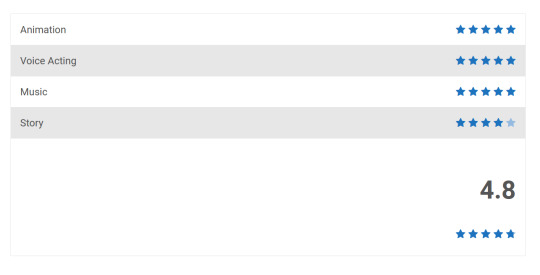
© 2023 Burkely Hermann. All rights reserved.
#the proud family#the proud family louder and prouder#anti white#princesses#disney princesses#culture war#the simpsons#milo murphy's law#kim possible#wednesday#velma#lgbtq#gay#phineas and ferb#hamster and gretel#the bad batch#colorism#futurama#amphibia#the owl house#totally spies#pop culture#reviews#Youtube
29 notes
·
View notes
Text

LGBTQ America: A Theme Study of Lesbian, Gay, Bisexual, Transgender and Queer History—chapter 09. Sexual and Gender Diversity in Native America and the Pacific Islands by Will Roscoe. (final)
Two Spirits Today: Renewal and Change
The section starts and continues by discussing two-spirit activism and cultural renewal being fostered by two-spirits and lgbtq native people. One such event is the intertribal powwows such as the Bay Area American Indian Two Spirits Powow which in 2015, drew over 2,000 attendees (09-12). Attendees were asked to define two-spirit, the answers varied; “two spirit means being born with a male and a female spirit”, while another said that the term is “more of a historical reminder that before colonization all of our tribes had multiple genders” (09-12)
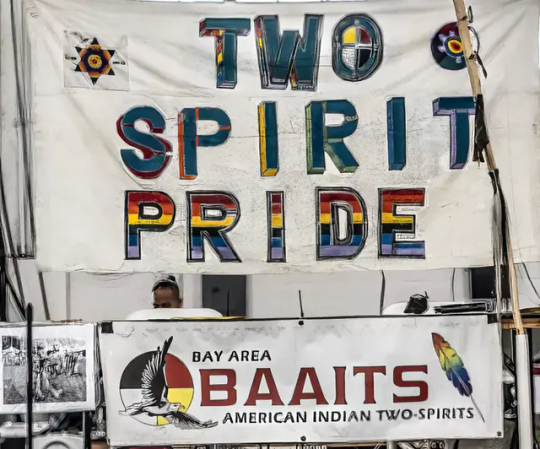
Two Spirits in the History of the United States

The author then tells us about four individuals who by our modern standards would be considered two-spirit, all of whom led incredibly fascinating lives. Most of them faced violence and prejudice in their lives. And this remains true for two-spirits today—the author mentions a young two-spirit Navajo named Fred Martinez Jr. who had been bullied and was murdered in a hate crime in 2001.
(Rest in Power, relative...)

Conclusion: History Matters
“Two-spirit/LGBTQ history not only challenges stereotypes and transforms prejudice, it provides the path to self-esteem, empowerment, and community for two-spirit-LGBTQ native people, while the stories of two-spirit males and females in American history teach us all about sexual and gender diversity and the ways in which these differences make distinctive cultural and historical contributions” (09-29)
#queer history#two spirited#two spirit#queer theory#usa history#heteronormativity#erotophobia#indigenous cultures#ecofeminism#indigenous people#queer ecology#critical ecology#ecology#environmental politics#colonialism#intersexuality#environmentalism#lgbtq#2s#2slgbtqia+
24 notes
·
View notes
Text
basic info dumping about the lads
!not set in stone!
JUNIPER PASSERINE:
lesbian
she/her
greek/hispanic
adhd, asperger's syndrome, recovering anorexic
house wren
june 2nd, 2006 (gemini)
ISTP-A
phoebe (mother) + carmelo (father)
cape suzette
spunky, brutally honest, assertive
pink
into engineering
inspiration: nikki (camp camp)
VA: elizabeth maxwell
XIMENA AVIANTA:
bisexual demisexual demigirl
she/they
hispanic
anxiety
robin
may 14th, 2006 (taurus)
ISFJ-T
harper (mother) + alonso (father)
st. canard
quiet, strong, smart
orange
into chemistry
inspiration: varian/catalina (tangled: the series)
VA: ruby jay
OZUL "OZZY SWAN" FLOCKSON:
gay
he/him
black (dark-skinned)
anxiety, depression
black swan
october 7th, 2006 (libra)
ENTP-T
esther (mother) + major (father), rhys (step-father)
faith (younger half-sister by 15 years)
st. canard
laidback, loyal, sarcastic
blue
into pyromancy
inspiration: louis (telltale: the walking dead)
VA: vincent tong
KAMARA "DOTTIE ANGELS" CHAMNANCAT:
omnisexual aromantic
she/her
thai/ethiopian
depression, cptsd
ocicat
november 30th, 2005 (sagittarius)
chariya (mother) + negasi (father)
kimora (younger sister by 9 years)
st. canard
tough, short tempered, rude
black
into therapy
inspiration: cassandra (tangled the series)
VA: eden espinosa
ZEKE "HUNTER" GUNDOG:
pansexual asexual
he/him
irish
cptsd
irish setter
february 13th, 2006 (aquarius)
roisin † (mother) + finn † (father), noelle (adoptive mother) + blanca (adoptive mother)
conor † (older brother by 6 years)
duckburg
friendly, strong, trusting
white
into history
inspiration: glenn rhee (the walking dead)/tadashi hamada (big hero 6)
VA: cameron boyce
WHITTANY LOP:
pansexual
she/her
black (light-skinned)/danish
adhd, anxiety
black lop rabbit
september 23rd, 2006 (libra)
winterva (mother) + leonard (father)
giselle (older sister by 5 years), cashmere and ricky (older sister and brother by 4 years), myrene (older sister by 2 years), jocelyn (younger sister by 3 years), shawn (younger brother by 8 years), malina (younger sister by 11 years)
cape suzette
chipper, condescending, fearful
purple
into art
inspiration: pinkie pie (my little pony)
VA: haley tju
EVERETT MUSTELIDANTE:
bisexual
he/him
indian/german
anxiety, depression
sable ferret
january 24th, 2005 (aquarius)
edith (mother) + emerson (father)
cape suzette
independant, distant, nerdy
red
into music/film
inspiration: sakutaro morishige (corpse party)
VA: jeremy jordan
SYLVIA HONEYBERG:
straight/greysexual
she/her
swedish/white/italian
anxiety, bulimia
red-legged honeycreeper
june 25th, 2005 (cancer)
seek (mother) + nolan (father)
duckburg
preppy, insecure, adventurer
brown
into fashion
inspiration: porsha crystal (sing 2)
VA: abigail zoe lewis
MARSHALL "MARSHMALLOW" SNOWSHOE:
gay demiromantic demiboy
he/they
white/russian
adhd
canadian lynx
august 15th, 2007 (leo)
fanya (mother) + austin † (father)
masha (younger sister by 4 years)
st. canard
outgoing, flirt, sweetheart
yellow
into mixology
inspiration: william clockwell (invincible)
VA: bryce papenbrook
HAE-WON "ASH" FLIWIG:
nonbinary aroace
they/them
korean
osteoporosis, anxiety
yellow canary
august 31st, 2005 (virgo)
soo-ah (mother) + du-ho (father)
duckburg
sarcastic, reserved, logical
sea green
into writing
inspiration: violet (telltale: the walking dead)
VA: colleen o’shaughnessey
EMALINE "KIWI" PURRBORNE:
bisexual
she/her
native american
epilepsy, lupus
bombay cat
july 17th, 2005 (cancer)
janese (mother) + king (father)
mariana (younger sister by 4 years), olivia (younger sister by 6 years)
st. canard
goofy, selfless, optimistic
light blue
into baking
inspiration: sayori (doki doki literature club)
VA: mae whitman
ADEN FANG:
demiromantic, demisexual
he/him
japanese/korean
cptsd
dhole
february 27th, 2004 (pisces)
cho (mother) + hiroshi (father)
cape suzette
distant, distrusting, loyal
grey
into criminalistics
inspiration: bigby wolf (telltale: the wolf among us)
VA: adam harrington
SAIGE "NIX" RODENTIA:
pansexual
she/her
portuegese/egyptian
cptsd
gundi
february 1st, 2005 (aquarius)
leonor † (mother) + rodrigo (father)
protective, tired, edgy
dark purple
into jewelry
inspiration: kenny/lee everett/clementine (the walking dead)
VA: lauren ash
DEAN RODENTIA:
straight
he/him
portuegese/egyptian/white
cptsd, depression, anxiety, asperger's syndrome
capybara
october 20th, 2006 (libra)
nour † (mother) + seth † (father)
lackadaisical, smart, strong-willed
pastel orange
into astronomy
inspiration: dipper pines (gravity falls)
VA: michael sinterniklaas
VIVIAN "VIV" PYROAR:
lesbian
she/her
black/white
social anxiety, adhd
lioness
november 29th, 2004 (sagittarius)
frances (mother) + timber (father)
childish, witty, artsy
magenta
into culinary
inspiration: rapunzel (tangled)
VA: erica lindbeck
#ozzy swan#juniper passerine#ximena avianta#whittany lop#everett mustelidante#hunter gundog#dottie angels#vivian pyroar#kiwi purrborne#marshall snowshoe#sylvia honeyberg#nix rodentia#dean rodentia#ash fliwig#aden fang#dt emeralds#dt opals#dt emerald opals
7 notes
·
View notes
Text
A new bill headed to Gov. JB Pritzker’s desk would require that Native American history be taught in Illinois schools.
“The Native American history is in our DNA,” said the bill’s chief sponsor, Rep. Maurice West (D-Rockford). “It’s our obligation to truly know our history as a state.”
The new law will be the latest in a string of school history curriculum laws that require social studies and history classes to teach Asian American history, Black history, and the contributions of gay, lesbian, bisexual, and transgender people.
“Gov. Pritzker believes that history should be taught in a way that conveys the story of our country and state as it actually happened,” a spokesperson for the Governor’s office said, according to The Center Square. “Including Native American history in the classroom … ensures students are given the tools to understand and empathize with one another.”
The curriculum will be developed in consultation with the Chicago American Indian Community Collaborative.
Younger students will learn about Native American contributions to art and politics, and older students will learn about the “genocide and discrimination against Native Americans.”
Illinois is one of 14 states that does not have an American Indian reservation.
#us politics#news#my state line#illinois#gov. j.b. pritzker#Maurice West#Democrats#progressivism#progressives#progressive politics#native americans#native american history#The Center Square#Chicago American Indian Community Collaborative#education reform#education system
18 notes
·
View notes